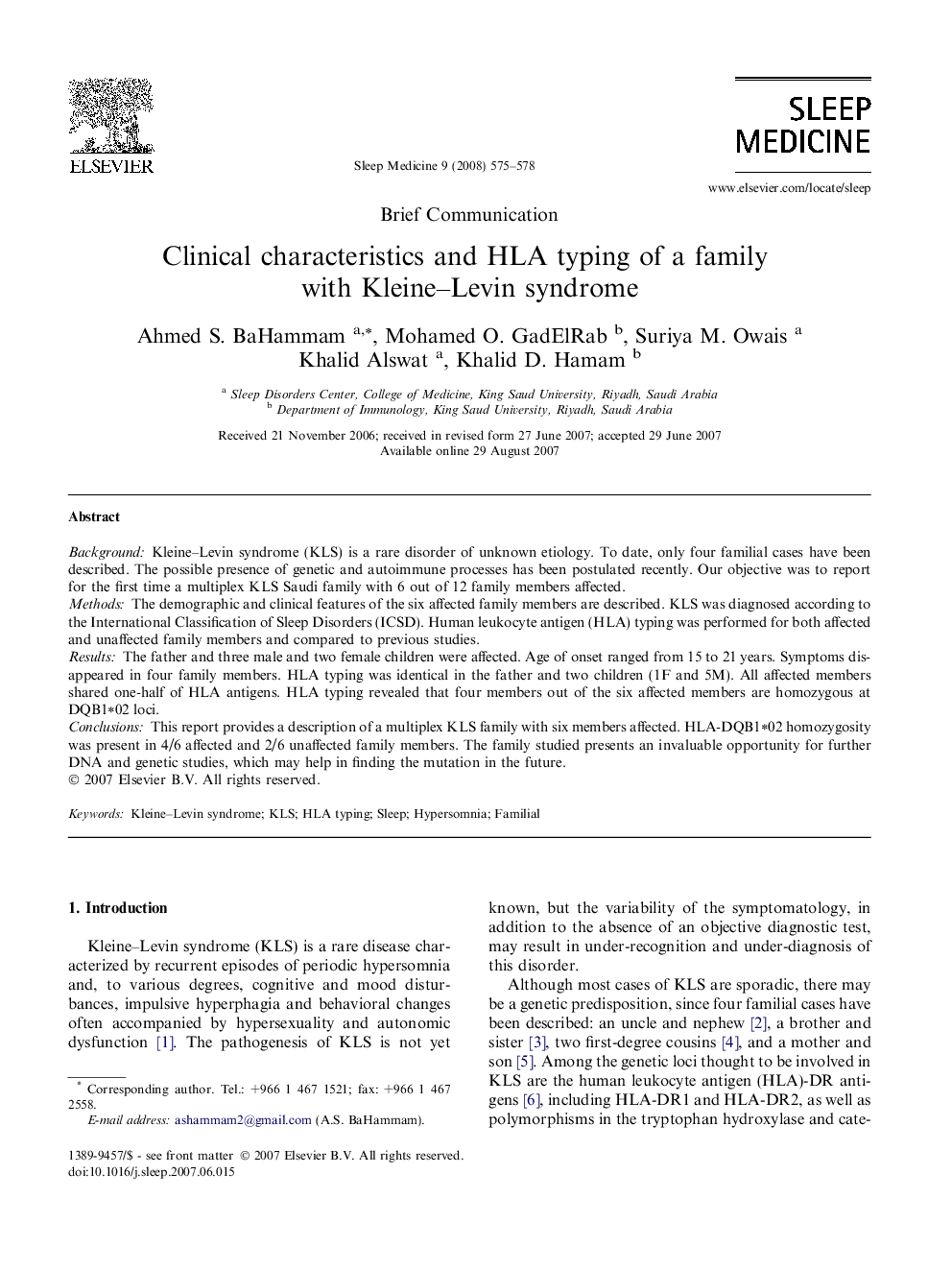| Article ID | Journal | Published Year | Pages | File Type |
|---|---|---|---|---|
| 3177521 | Sleep Medicine | 2008 | 4 Pages |
BackgroundKleine–Levin syndrome (KLS) is a rare disorder of unknown etiology. To date, only four familial cases have been described. The possible presence of genetic and autoimmune processes has been postulated recently. Our objective was to report for the first time a multiplex KLS Saudi family with 6 out of 12 family members affected.MethodsThe demographic and clinical features of the six affected family members are described. KLS was diagnosed according to the International Classification of Sleep Disorders (ICSD). Human leukocyte antigen (HLA) typing was performed for both affected and unaffected family members and compared to previous studies.ResultsThe father and three male and two female children were affected. Age of onset ranged from 15 to 21 years. Symptoms disappeared in four family members. HLA typing was identical in the father and two children (1F and 5M). All affected members shared one-half of HLA antigens. HLA typing revealed that four members out of the six affected members are homozygous at DQB1∗02 loci.ConclusionsThis report provides a description of a multiplex KLS family with six members affected. HLA-DQB1∗02 homozygosity was present in 4/6 affected and 2/6 unaffected family members. The family studied presents an invaluable opportunity for further DNA and genetic studies, which may help in finding the mutation in the future.
